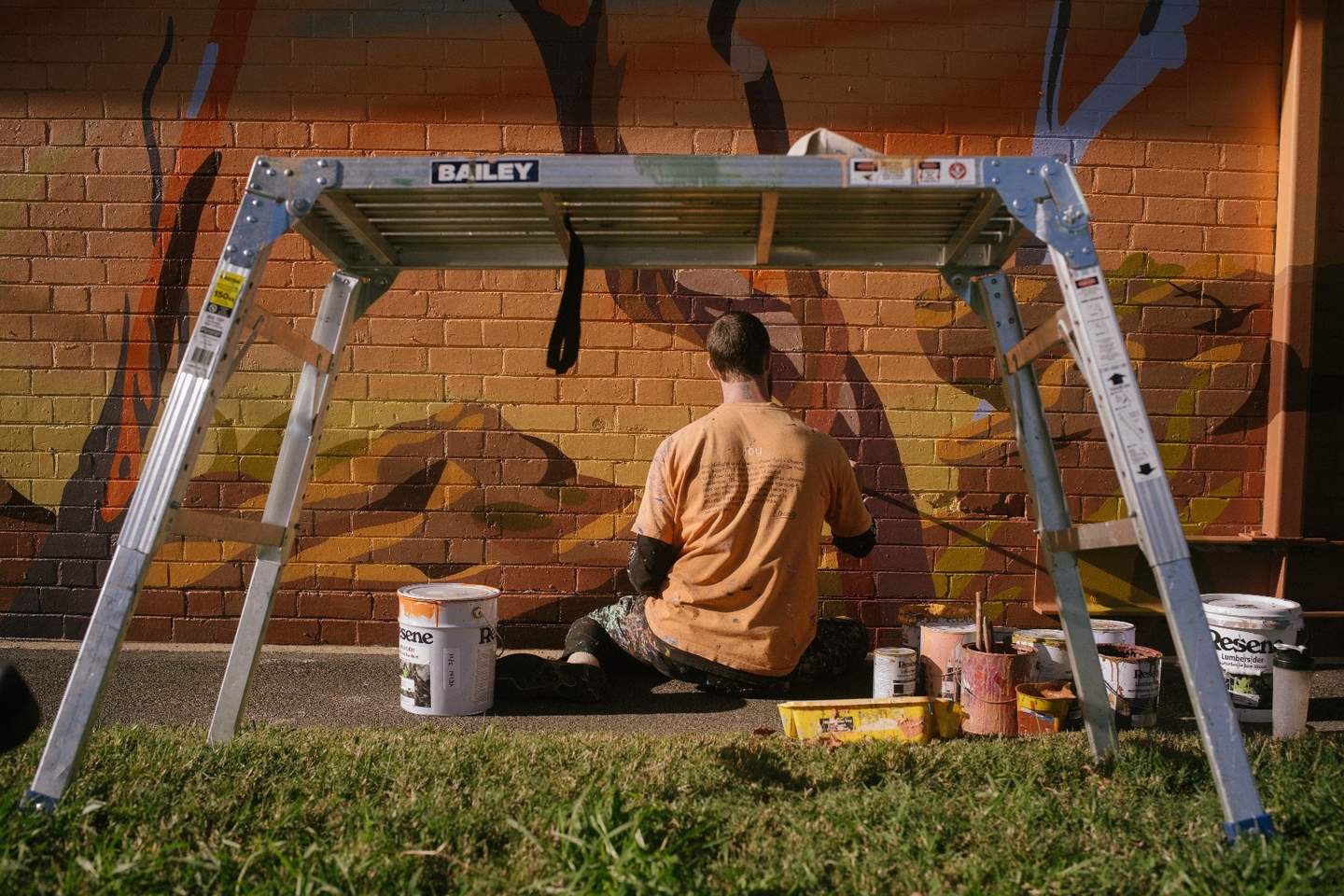Enjoying a leisurely drive into the hinterland of the Sunshine Coast, the road takes you through beautiful countryside and picturesque hamlets. One such place is Mapleton.
In 1890 Thomas Smith and his brother William embarked on a search for land to grow bananas. They boarded a train from Redland Bay to Caboolture and a coach to Petrie Creek (Nambour) and walked westward through partly settled country on to the top of the range.
William selected an area surrounding today’s Rainbow Park Drive while Thomas named his property “Belleville Orchard” near the Mapleton Falls. Their first task was to cut a walking track from their blocks to the top of the range and then down its steep slopes to the timber track below.
The track was narrow, steep and dangerous but was the only means for the brothers to carry supplies of food, necessities and tools from boats at Petrie Creek. Each trip to Nambour and back was a walk of 30 kilometres.
A slab hut was built and their sister Amy came to help keep the house for them. Tough times ahead as they started to clear their selections. Two timber cutters were engaged and as the branches were so entwined and trees linked with vines, many trees would not fall separately when cut. A method called “timber drive” was adopted. This required the scrub cutter to cut almost through the trunks of a large number of trees at once, leaving key trees uncut, about a quarter of an acre at a time. The key trees would then be cut or dynamited and the entire lot would fall together.
During the drought of 1890-91, all the drinking water dried up and every creek was dry due to the standing timber, the Smith family began to think they would have to give up. Thoughts of leaving were banished when Thomas noticed a rather moist spot on the ground around a gum stump.
Using a windlass with lawyer vine instead of rope, he dug to the depth of 50 feet where he found water. This shows the true spirit of ingenuity which is born out of need.
The two brothers worked together and cleared areas on their separate selections, they were in their twenties and worked dawn to dark. They planted bananas, maize, sweet potatoes, pumpkins, tomatoes and other crops but in the mid-1890s they decided to switch to citrus growing and the district later became well-known for its orange orchards.
The fruit crop was carried by a line of pack horses as the track was not wide enough to permit any type of carting conveyance. This included four or five horses, with two cases of bananas each, being used to traverse the steep and dangerous route to Nambour.
The trials and tribulations of getting supplies up the track were daunting as well. The story of Thomas being met with great hilarity when he turned up at the station in Nambour to collect a double mattress. His response was if he couldn’t manage to carry it home before nightfall, he at least had a bed to sleep on! Thomas and the mattress arrived safely.
Another early settler, D J Williams who had married Amy, faced a similar experience when he was contacted by the stationmaster that a kitchen safe had arrived for him to collect as soon as possible. He decided the only way to manage it up the track was to use a wheel barrow and set out on his epic journey.
Amy showed her mental and physical resilience when returning from Brisbane with her new born child for on arriving at Landsborough Railway Station she was informed that the next train to Nambour would be the next day. Knowing her husband was waiting for her in Nambour, she set out to walk with her new born baby. It is said that she never forgot this journey walking on the railway sleepers which were too close to walk in comfort.
The little settlement grew and was at the time known generally as the Blackall Range. The time came when a name for the settlement was required. A meeting was called by the settlers and a number of names were suggested. It is told that William Smith mentioned he happened to being reading a book where in there was a pretty little place named Mapleton, hence Mapleton was named.
In 1899 a provisional school was established, the postal receiving office became a post office in 1900, and as the roads improved enough to allow timber haulage, the Mapleton Sawmill was opened in 1909. The Ocean View Hotel was built in 1909 and opened in January 1910.
Thomas Smith’s reputation as a man of remarkable skill with anything mechanical became widely known earning him the title of the “Edison of Mapleton”. At the agricultural show held in Nambour in 1909 it was reported that Thomas Smith exhibited electroplating and other electrical and mechanical appliances. He also invented an electric fence and a tree spraying machine driven by compressed air.
Thomas made a theodolite in a length of pipe and used it to survey the levels for the road to Obi Obi from Mapleton and the bypass around the steep Dalzell’s Pinches on the road to Nambour.
His most noteworthy achievement was in 1917 when he stretched a strong wire rope above the Mapleton Falls between two large trees and set a cage suspended by overhead pulleys on the rope. The length of the rope was about 60 metres and the breaking strain was said to be 11 ½ tonnes. Inside the cage was a winch operating a light cable by which daring passengers could wind themselves across the chasm at the top of the falls and back again.
It was a breathtaking and exciting adventure. The falls transformed into a wide foaming mass of water after heavy rain falling more than 100 metres to the rocks below. This vista of the perpendicular wall of rock with its adornment of ferns and vines framed by a mass of Piccabeen palms along the banks of the stream and flanked by the giants of the forest, was awe-inspiring and beautiful.
As you would expect, Thomas was often called upon to rescue panic-stricken passengers stuck halfway across. It was deemed unsafe in the 1920s and dismantled.
How far ahead of his time was Thomas Smith, the “Edison of Mapleton”?
Thanks to the Sunshine Coast Council’s Heritage Library staff for the words and Picture Sunshine Coast for the images.








